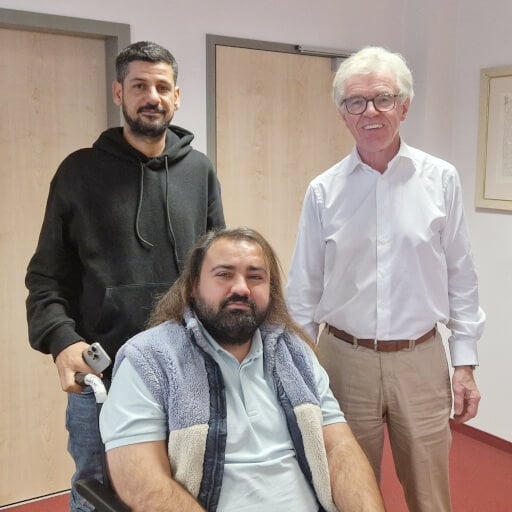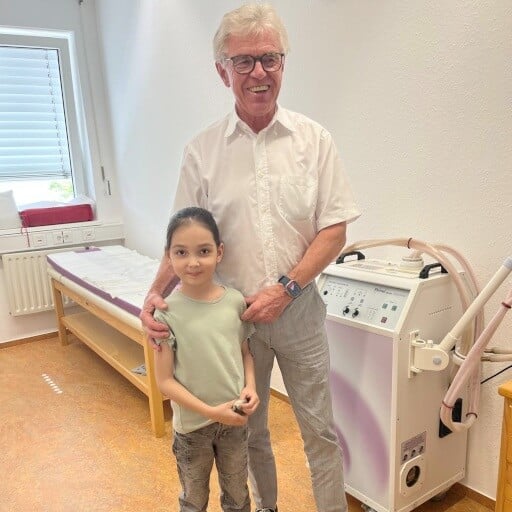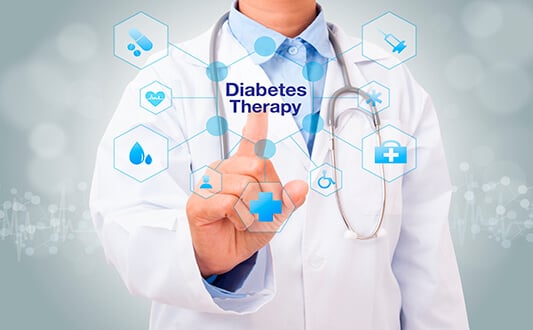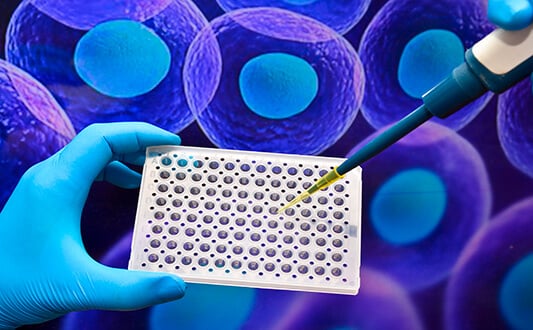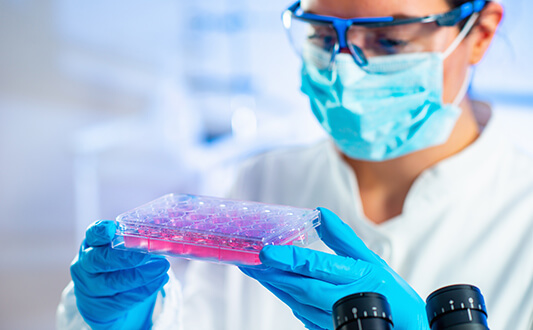With diabetes affecting 589 million adults worldwide – representing 1 in 9 adults – and projections showing this could reach 853 million by 2050, innovative treatment approaches are increasingly vital [1]. Stem cell treatment for diabetes is a method of treating diabetes mellitus by injecting stem cells, own or donor ones. The method is based on the ability of the stem cells to reproduce damaged structures of the body.
Stem cell therapy for diabetes can produce positive results when treating type 1 diabetes. The treatment makes it possible to reduce the dose of insulin and the number of injections. In treating type 2 diabetes mellitus, it reduces the amount of hypoglycemic agents and potentially helps achieve prolonged remission.
The Growing Global Diabetes Crisis and Treatment Challenges
Diabetes has reached epidemic proportions worldwide, affecting 589 million adults aged 20-79 years according to the latest International Diabetes Federation (IDF) Diabetes Atlas. This staggering number represents 11.1% of the global adult population – essentially 1 in 9 adults living with diabetes today. Even more concerning, over 4 in 10 people with diabetes remain unaware they have the condition. [1]
The projections paint an even more challenging future: by 2050, approximately 853 million adults will be living with diabetes, representing a 46% increase. Over 90% of these cases involve type 2 diabetes, driven by urbanization, aging populations, decreasing physical activity, and rising obesity rates. Particularly troubling is that over 4 in 5 adults with diabetes live in low- and middle-income countries, where access to adequate treatment remains severely limited. [2]
Limitations of Conventional Diabetes Treatment
Current diabetes management relies heavily on symptom control rather than addressing root causes [3]. Traditional approaches face significant limitations:
- Despite medication, diabetes typically worsens over time, and complications develop
- Unable to restore damaged pancreatic beta cells
- The condition requires continuous medication with potential side effects
- Cost burden: ongoing expenses for medications, monitoring, and complications treatment
These limitations highlight why patients increasingly seek innovative treatments like stem cell therapy that address underlying disease mechanisms.
How Stem Cell Therapy Can Transform Diabetes Management
A stem cell transplant for type 1 diabetes or the 2nd type is capable of mitigating the course of the disease and even leading to remission, as well as preventing complications and eliminating the existing ones. The treatment has a regenerative effect on such complications of diabetes as:
- Ulcers
- Diabetic foot
- Kidney damage
- Atherosclerosis of blood vessels
- Retinopathy, optic nerve atrophy
Understanding Stem Cells for Diabetes Type 1
- Stem cells are transformed into beta cells of the pancreas, where they start to produce insulin
- They potentially constrain the autoimmune factor
Stem cell therapy for type 1 diabetes is an alternative diabetes treatment. However, it does not exclude insulin injections. Cell therapy eliminates complications and reduces the dose of substitution drugs, potentially replacing them [6]. Type 1 diabetes is an autoimmune disease that is hard to cure.
Understanding Stem Cells for Diabetes Type 2
- Stem cells increase the sensitivity of cellular receptors to insulin
- Stem cells are transformed into vascular cells, stimulating them to regenerate after being damaged as a result of the interaction of proteins with sugar
After the type 2 diabetes stem cell treatment, patients can expect a long-term remission up to full recovery. In this form of diabetes, the body produces enough insulin. The problem is in the cell receptors, which lose sensitivity to insulin. [4, 5] Stem cells for type 2 diabetes can instruct the body to "fix" this function, producing new cells with "healthy" receptors.
Who Can Benefit from Stem Cell Treatment
Any patient who has no contraindications can try cell therapy for diabetes. Diabetes stem cell treatment is contraindicated for patients who:
- Have an acute stage of infectious or chronic diseases
- Pregnant or are in the period of lactation
In this case, the patient needs to achieve remission / give birth / wait for the termination of lactation. After that, it will be possible to start the therapy.
Expert Insights: Dr. Siebenhüner's Four Decades of Medical Innovation
To learn more about the new treatment for diabetes and real patient outcomes, we had the privilege of interviewing Dr. med. Gerhard Siebenhüner, a renowned expert with over 40 years of medical experience. Since 2005, Dr. Siebenhüner and his team have been at the forefront of stem cell therapy, achieving remarkable results in treating various conditions, including diabetes mellitus and its complications.
"Revolutionizing Patient Care": Dr. Siebenhüner's Advanced Stem Cell Therapy Expertise
The Process of Stem Cell Therapy for Diabetes in Germany
Before having stem cell therapy for diabetes, the patient undergoes a thorough diagnosis. If there are no contraindications, preparatory therapy is prescribed.
In various clinical situations, one of three types of stem cells is used:
- Own cells taken from fat. To achieve this, the doctor takes a puncture with a syringe of adipose tissue from the patient under local anesthesia.
- Peripheral blood cells are extracted by a process called leukocytapheresis. The blood of the patient (or compatible donor) circulates through an apheresis apparatus for several hours. In the process, the necessary type of cells is separated.
- Cells from the own or donor bone marrow. Using a wide needle, the bone marrow puncture is taken from the sternum or femur.
The Step-by-Step Process of Stem Cell Therapy for Diabetes
The process of stem cell treatment in Germany for diabetes follows a carefully structured protocol designed to maximize effectiveness and safety. On the first day, patients undergo a comprehensive examination, after which doctors select the optimal therapeutic approach.
Depending on the selected technique, stem cells are extracted on the second day from either bone marrow (using iliac crest puncture) or adipose tissue through a minimally invasive procedure. Within a specialized laboratory, doctors extract stem cells from the patient's material and examine them for HIV, cytomegalovirus, hepatitis C and B. The number of obtained stem cells is counted, and their viability is assessed to ensure they meet all quality requirements.
The patented processing method guarantees optimal quality and sterility of the biological material. Reimplantation typically occurs two days after cellular material preparation. The administration method depends on the patient's specific condition:
- Intravenous injection distributes stem cells evenly throughout the body, used for systemic effects in diabetes treatment
- Angiography involves targeted administration through a catheter directly into specific organs
- Lumbar puncture delivers stem cells into the spinal canal for treating neurological complications
Conventional vs. Stem Cell Therapy and Diabetes
Understanding the differences between traditional diabetes management and innovative stem cell therapy helps patients make informed decisions about their treatment options [7].
| Conventional Treatment | Stem Cell Therapy | |
|---|---|---|
| Treatment Focus | Symptom control and blood sugar management | Addressing root causes and tissue regeneration |
| Beta Cell Function | Cannot restore damaged pancreatic cells | Can transform into insulin-producing beta cells |
| Type 1 Diabetes | Requires continuous insulin replacement | Reduces insulin dose and injection frequency |
| Type 2 Diabetes | Progressive worsening over time | Increases cellular sensitivity to insulin |
| Autoimmune Response | Cannot address autoimmune destruction | Helps regulate the autoimmune factor in type 1 |
| Long-term Outlook | Disease typically progresses despite treatment, and complications develop | Potential for sustained improvement or remission |
| Treatment Duration | Ongoing, lifelong requirement | Single treatment course with lasting effects |
*This comparison is based on Booking Health clinical evidence and patient outcomes reported in medical literature. Individual results may vary, and stem cell therapy does not completely replace conventional treatment in all cases.
Real Patient Stories: Life-Changing Results of Stem Cell Therapy for Diabetes
These inspiring patient experiences demonstrate the transformative potential of stem cell therapy for diabetes and its complications. Each story reflects the personal journey of individuals who found hope through innovative treatment when conventional medicine reached its limits.
Sofiia Akimova
At 21, Sofia had battled diabetes mellitus for 17 years when she developed optic nerve atrophy and glaucoma, serious complications that progressively worsened despite conventional treatment.
"At home, I underwent conservative treatment, including magnetotherapy, physiotherapy, and vitamins," Sofia recalls. "But it did not improve my eyesight much, and my vision still gradually got worse." Facing the prospect of continued vision loss, Sofia and her family researched treatment options abroad and discovered that stem cell treatment for diabetes type 1 in Germany was being used effectively for decades.
Sofia's treatment at the Clinic of Advanced Biological Medicine in Frankfurt was remarkably different from her previous experiences. "It was really good because it was not invasive to my eye," she shares. "Doctors gave me injections and eye drops, so it was comfortable. There were no side effects, no discomfort, no pain."
The results have been life-changing. "I'm more than happy with this treatment and the results," Sofia says. "The blurriness is now gone. I see the outlines of things I'm looking at, and it's basically easier for me to use my cell phone and move around on my own." Even her friends noticed positive changes: "They say that I have somehow become happier and more confident."
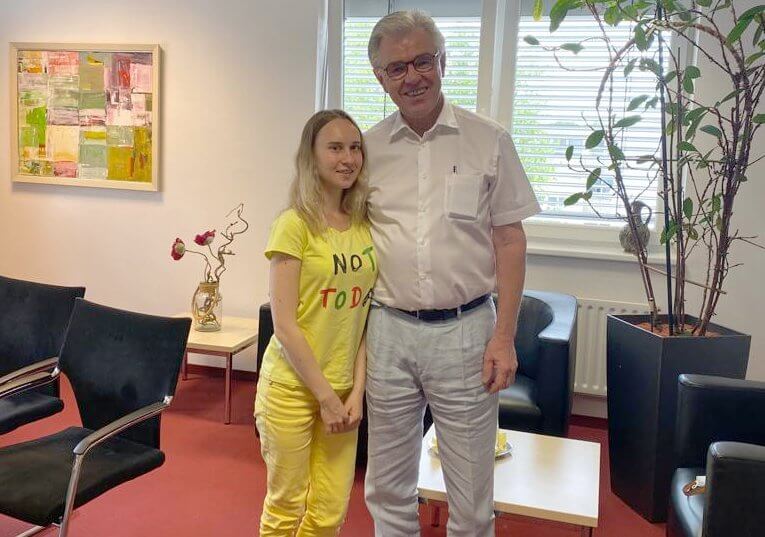
Zogaj Gani
Speaking in Zogaj's own words about his diabetes treatment experience from Iceland:
"Booking Health does a really good job!
I am a diabetes patient from Iceland. Booking worked really well, organized things fast and directly (sometimes too unexpected maybe) – thanks a lot to Yuliya and Mira!
And the interpreter was really skillful. He has 7 languages in his knowledge and works well with people solving issues. I would recommend the company to others."
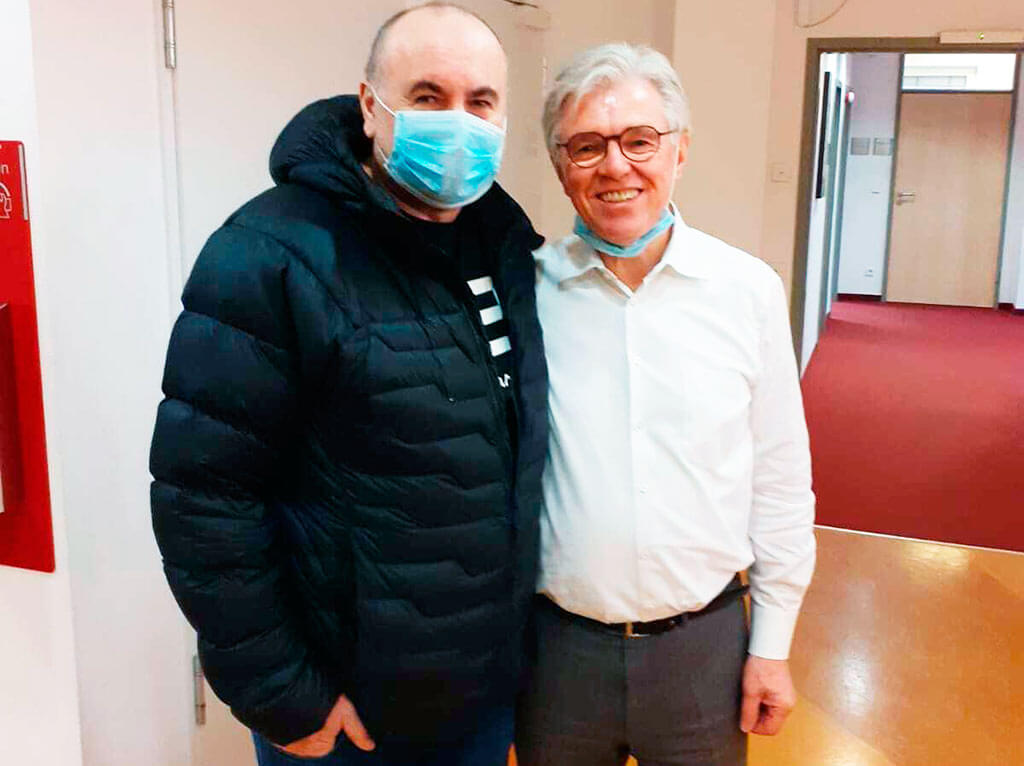
Where can I get stem cell treatment for diabetes?
Treatment of diabetes mellitus with stem cells is currently being studied in a number of countries at research centers and clinics. Treatment is appointed on the basis of a medical consultation where doctors of different specialties participate. You can receive stem cell treatment for diabetes mellitus at the Clinic of Advanced Biological Medicine, Frankfurt am Main.
The stem cell treatment for diabetes type 1 cost depends on the chosen medical facility and country; currently, the average cost of treatment is € 22,172. For patients exploring treatment options, the cost of stem cell treatment for diabetes type 2 can vary depending on the facility and specific treatment protocol.
Booking Health will help you undergo innovative stem cell therapy abroad. Booking Health is a medical tourism operator that has been organizing the treatment of people with diabetes mellitus from 75 countries in the world's leading hospitals for more than 12 years. International patients can save up to 50% on treatment costs by working with Booking Health, which can secure resident pricing.
Your Journey to Better Diabetes Management
Finding the best treatment strategy for your diabetes can feel overwhelming, especially when you've already tried multiple approaches without achieving the results you hoped for. After consulting numerous specialists and experiencing the limitations of conventional therapy, you may feel lost navigating all the medical information and treatment options available.
Rather than settling for standardized treatment protocols with their well-known limitations and side effects, exploring specialized innovative treatment options like stem cell therapy can open new possibilities for managing your diabetes more effectively.
To make an informed choice and receive a personalized diabetes management plan tailored to your specific clinical situation, consulting medical experts who specialize in advanced diabetes treatments is essential. With over 12 years at the forefront of innovative medical treatments, specialized medical teams possess solid expertise in creating comprehensive diabetes management programs for each case.
Comprehensive support services include:
- Assessment and analysis of your medical reports
- Development of personalized medical care programs
- Selection of suitable treatment locations
- Preparation and forwarding of medical documents to the appropriate clinics
- Preparatory consultations with clinicians for developing your care program
- Expert advice during your hospital stay
- Follow-up care coordination after you return home
- Assistance with all preparation formalities
- Complete coordination of your stay abroad
- Visa and travel assistance
- Personal coordinator and interpreter with 24/7 support
- Transparent budgeting with no hidden costs
Health represents one of life's most valuable assets. Entrusting the management of something so precious should only be done with experts who have proven experience and established reputations. Working with trustworthy partners assists you in pursuing stronger health and improved quality of life.
Stem Cell Therapy: Patient Stories with Booking Health
Frequently Asked Questions About Diabetes Stem Cell Treatment
Send request for treatmentStem cell therapy for diabetes is a treatment method that involves injecting stem cells (either autologous or donor) to help repair and regenerate damaged pancreatic tissue. The therapy works by either transforming stem cells into insulin-producing beta cells (type 1) or increasing cellular sensitivity to insulin (type 2).
Stem cells for type 1 diabetes can transform into beta cells that produce insulin while also helping to regulate the body's autoimmune response. In type 2 diabetes, they increase the sensitivity of cellular receptors to insulin and help regenerate damaged blood vessels.
Type 1 diabetes patients can expect reduced insulin doses and fewer injections, though complete cure isn't possible since it's an autoimmune disease. Type 2 diabetes patients may achieve longer remission periods and potentially full recovery, as the therapy helps restore proper insulin sensitivity.
Recent clinical trials have shown promising results. The treatment continues to be studied in various research centers and clinics worldwide, with ongoing developments in treatment protocols and effectiveness.
According to clinical evidence, there have been no documented cases linking cancer to stem cell therapy. The main limitations are contraindications for patients with acute infectious diseases, pregnancy, or during lactation.
At leading facilities like the Clinic of Advanced Biological Medicine in Frankfurt-am-Main, the average cost of treatment is € 22,172. International patients can save up to 50% on treatment costs by working with medical tourism operators who can secure local resident pricing.
Stem cells transform into insulin-producing beta cells in the pancreas for type 1 patients, while they increase cellular sensitivity to insulin for type 2 diabetes. The therapy also helps regenerate damaged blood vessels and tissues affected by diabetes complications.
Type 1 diabetes and stem cell therapy cannot provide a complete cure since it's an autoimmune disease, but it significantly reduces insulin doses and injection frequency. Type 2 diabetes patients may achieve long-term remission or potentially full recovery through restored insulin sensitivity.
Type 1 diabetes stem cell treatment cannot provide a cure as it's an autoimmune disease. However, it can reduce insulin requirements, decrease injection frequency, and help regulate the autoimmune response while preventing further pancreatic damage.
Five types are used: umbilical cord blood cells, fat-derived cells, peripheral blood cells through leukocytapheresis, bone marrow cells, and in some countries, fetal cells. The choice depends on individual patient conditions and treatment protocols.
Clinical trials show that a new type 2 diabetes treatment with stem cells can achieve prolonged remission. Type 1 patients experience reduced insulin doses and fewer complications.
Results vary by diabetes type and individual response. This method is a milestone for diabetes new treatment research, as it offers lasting effects from a single treatment course.
The treatment has minimal side effects and no invasive procedures. Main contraindications include acute infections, pregnancy, or lactation periods.
Choose treatment abroad and you will for sure get the best results!
Authors:
This article was edited by medical experts, board-certified doctors Dr. Nadezhda Ivanisova, and Dr. Bohdan Mykhalniuk. For the treatment of the conditions referred to in the article, you must consult a doctor; the information in the article is not intended for self-medication!
Our editorial policy, which details our commitment to accuracy and transparency, is available here. Click this link to review our policies.
Sources:
[1] International Diabetes Federation. Facts & figures. https://idf.org/about-diabetes/diabetes-facts-figures/
[2] The Lancet. Worldwide trends in diabetes prevalence and treatment from 1990 to 2022: a pooled analysis of 1108 population-representative studies with 141 million participants. https://www.thelancet.com/journals/lancet/article/PIIS0140-6736(24)02317-1/fulltext
[3] National Institute of Diabetes and Digestive and Kidney Diseases. Managing Diabetes. https://www.niddk.nih.gov/health-information/diabetes/overview/managing-diabetes
[4] National Institute for Health and Care Excellence. Type 2 diabetes in adults: management. https://www.nice.org.uk/guidance/ng28
[5] Medscape. Type 2 Diabetes Mellitus Treatment & Management. https://emedicine.medscape.com/article/117853-treatment
[6] The Scientist. Cell Therapy is Poised for Sweet Victory in Diabetes. https://www.the-scientist.com/cell-therapy-is-poised-for-sweet-victory-in-diabetes-72733
[7] NatureMedicine. Stem cell therapies for diabetes. https://www.nature.com/articles/s41591-025-03767-8
Read:
Stem cell treatment in Germany
The latest and most promising treatments for diabetes in German hospitals
Article menu:
- The Growing Global Diabetes Crisis and Treatment Challenges
- How Stem Cell Therapy Can Transform Diabetes Management
- The Process of Stem Cell Therapy for Diabetes in Germany
- Real Patient Stories: Life-Changing Results of Stem Cell Therapy for Diabetes
- Where can I get stem cell treatment for diabetes?
- Your Journey to Better Diabetes Management
- Frequently Asked Questions About Diabetes Stem Cell Treatment
Don't know where to start?
Contact Booking Health

